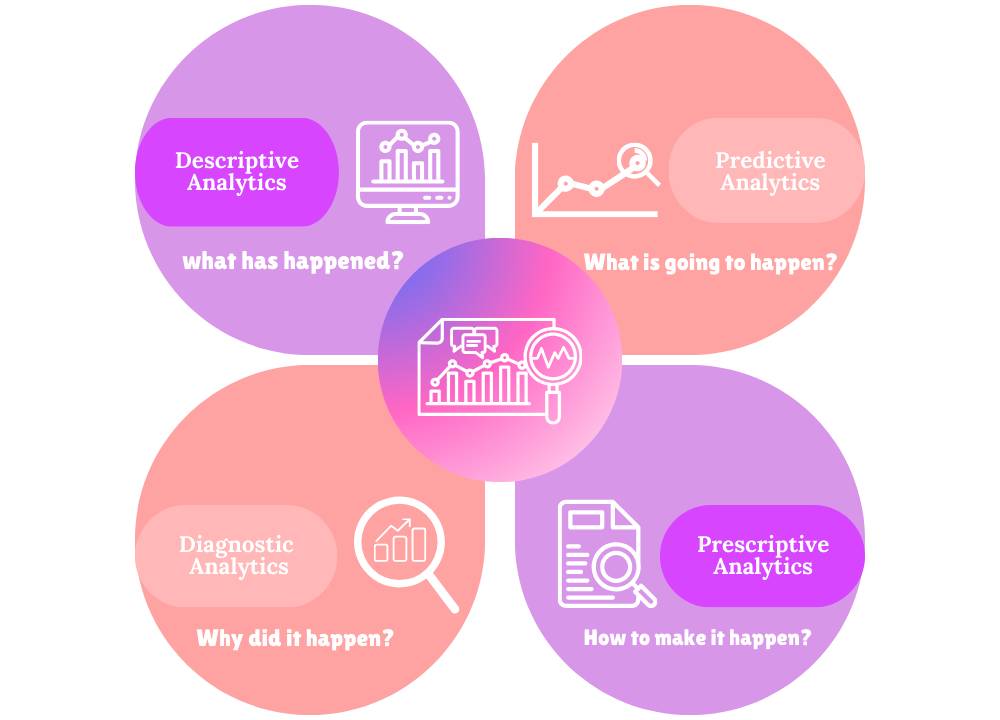What is People Analytics?
People analytics is a key element in human resources. Data can be used to examine or improve the way people work within the organizational environment. A pattern of collecting data on issues such as how employees perform and how happy they are, helps companies make smart choices on hiring and supporting employees. It‘s all about bringing data onto which to make each job better for everyone.
Let’s discuss more about how workforce analytics can add value to your business.
Table of Contents
Why do Businesses Need People Analytics?
The main reason why businesses need people analytics is it helps them to understand and optimize their workforce. It is like a compass that directs the managers in the right direction of the selection and retention of employees.
With data analysis, organizations can make better decisions, boost productivity, and align their workforce with their objectives. In brief, the applications of employee analytics allow companies to have satisfied teams which in turn lead to their success.
What are the Benefits of People Analytics?
People analytics offers many benefits, let’s discuss some of them.
Better Hiring Decisions
Analysing employee data can help companies understand what qualities and skills are necessary for success in specific job roles. By using the analysis data from previous hiring processes, businesses can make more informed decisions about whom to recruit.
Improved Employee Engagement
People analytics helps in identifying factors that contribute to engagement, and subsequently, the companies can create a positive work environment which results in loyalty and commitment. When workers realize that they are valued and supported, they tend to be more engaged and productive.
Workforce Planning
Employee analytics provides information that can be used to define the approach of the workforce planning process. By performing data analysis on markers like demographics, talent and readiness to switch jobs, companies may be better prepared for future talent needs and solve them.
Cost Savings
Staff analytics can help save costs for businesses by optimizing hiring processes, reducing turnover rates, and improving productivity, companies can witness a reduction in recruitment, training, and replacement costs.
Data-Driven Decision Making
People analytics provides data-driven insights that inform strategic decisions about workforce planning, organizational design, and talent management. By leveraging these insights, businesses can align their human capital strategy with their overall business goals, driving growth and innovation.
Competitive Advantage
Companies which successfully apply human analytics can excel in the competitive market. Through the use of optimized workforce strategies and the creation of a positive employee experience, businesses can attract the best talent, maintain key employees and outshine their competitors.
What are the Types of People Analytics?
There are primarily four main types of employee analytics, let’s discuss them.

Descriptive Analytics
Descriptive analysis is focused on telling the reader what happened in the past. It deals with looking at historical data to find out trends and patterns related to employee turnover rates, performance ratings, and demographic information.
Predictive Analytics
Through predictive analytics, one tries to foresee the future using the previous data. It applies statistical algorithms and machine learning techniques to forecast which employees are likely to resign from the organization or what effects replacing some people with new ones might have on employee engagement.
Prescriptive Analytics
This category tells what might happen and provides insights into what actions to take. It bases its suggestions on the data retrieved from descriptive and predictive analytics to improve things like employee retention or team productivity.
Diagnostic Analytics
Diagnostic analytics explores the data in-depth to find out what is behind certain trends or patterns. It helps in the discovery of the real reasons behind problems like low employee morale and high turnover rates, hence, organizations can tackle the underlying problems.
How Insights from People Analytics Can Transform HR Processes?
Insights from human analytics can completely change how HR (Human Resources) works. Think of it like a magic wand that helps HR teams understand and improve everything about the people in a company.
- Happier Employees: With the use of methods such as job satisfaction surveys and feedback, HR can figure out ways to make employees happy. This can result in changes like better benefits or more flexible work hours and also makes employees happier and more productive.
- Predicting Needs: Workforce analytics can make predictions about when employees might leave or when the company might need more staff. This can help HR plan in prior and avoid sudden shortages or turnover.
- Fairer Promotions: Through the analysis of performance data, HR can ensure everyone’s getting fair promotions and those promotions are based on merit. This makes employees feel valued more and motivates them to do their best.
- Continuous Improvement: HR can always use Employee analytics in their favour to see the changes over time and make necessary adjustments to create a better workplace.
- Mitigating Risks: Human resources analytics helps in detecting workforce risks and compliance issues. By monitoring employee behavior, performance, and attendance data, HR can pinpoint patterns linked to misconduct, fraud, or policy violations. This enables timely intervention and risk mitigation.
- Enhancing Employee Relations: Staff analytics can assist human resources to spot the trends and patterns in personal relationship issues at work, for example, conflicts or complaints. Through data analysis of employee feedback, performance reviews, and exit interviews, HR can proactively deal with the root cause of the problem and promote the use of strategies that would enhance communication, collaboration, and morale within the organization.
- Identifying Training Needs: HR analytics helps HR managers identify skill gaps and training needs within the workforce. By analyzing performance data and skills assessments, HR can pinpoint areas where employees may need additional training or development opportunities to enhance their capabilities and effectiveness in their roles.
How do I Get Started with Human Analytics?
Getting started with human analytics is easier than you think you just need to follow these steps to get started.
- Learn the Basics: First, you need to understand all the essential concepts such as workforce analytics and talent management.
- Set Goals: Define clearly what you are looking to accomplish by using people analytics, such as higher retention or performance.
- Collect Data: Obtain data on your workforce, such as age groups and performance criteria.
- Choose Tools: Choose the tools that you will use to analyze your data, this can include people analytics software, visualization tools, or another type of tool.
- Analyze Data: Evaluate the data you have and look for patterns and insights that will help you to understand the workforce better.
- Interpret Results: Figure out what the data tells you about your company and find where you can make things better.
- Take Action: Apply the knowledge to reshape your business and practice different approaches such as policy implementation or training provision.
Some Examples of People Analytics
Here are a few real-time examples of organizations that have successfully implemented human analytics and benefited from it.
As you are well aware Google is a widely known search engine globally and you might wonder how an organization like Google uses human analytics to make better and data-driven decisions.
Google uses human analytics to boost productivity, satisfaction, and retention. By analyzing data from surveys, reviews, and internal systems, Google shapes its HR practices. For instance, it identifies traits of successful teams and adjusts hiring to fit its culture. This keeps employees engaged and attracts top talent, making Google a tech leader.
Xerox
Xerox, used human analytics to improve the call centre’s high turnover rate. They discovered such training and morale issues by investigating performance, job satisfaction, and turnover.
Therefore, Xerox put in special training, revisited their processes and offered rewards, too. This decrease in turnover, increase in engagement, and enhanced productivity were the outcomes.
Netflix
Netflix uses human analytics to personalize employee experiences and talent management. Through preferences, performance and career objectives analysis, Netflix customizes HR programs.
This is illustrated by the identification of learning opportunities that are in sync with interests, which in turn, enhances engagement and retention. Furthermore, it guarantees fair pay according to the contribution and the market value.
IBM
IBM stands out in its human analytics for HR decisions. They do skill gap identification, talent prediction and recruitment planning using data. For example, they examine performance to spot future leaders and make workforce planning more efficient. This increases engagement, reduces turnover, and enhances competitiveness.
Want to Know Your Employees Better?
Achieve better outcomes with people analytics insights
Signup for FreeBook DemoTry Time Champ’s People Analytics Features
Use Time Champ’s robust people analytics tools and unlock the full potential of your workforce. Let’s take a look at some of the key features of Time Champ in detail to give you a better understanding of the processes.
Performance Tracking
Performance tracking feature can help in,
- Monitoring individual and team performance metrics, including key performance indicators (KPIs).
- Identifies top performers and areas for improvement.
- Generates performance reports to assess progress over time.
Engagement Analysis
Engagement analysis helps in
- Evaluating employee engagement through surveys and feedback.
- Analyzing sentiment and participation in company initiatives.
- Identifying factors that affect engagement and taking proactive measures.
Retention Insights
This feature gives insights into
- Tracking turnover rates and reasons for exits.
- Identifying trends in turnover data and predicting potential risks.
- Implementation of retention strategies based on data-driven insights.
Attendance Management
The attendance management feature provides insights into
- Monitoring attendance and time-off requests.
- Tracking absenteeism and tardiness patterns.
- Generating attendance reports for compliance and payroll.
- Set up alerts for unauthorized absences.
Productivity Trends
You can easily get insights into productivity trends through productivity tracking by
- Analyzing employee productivity trends.
- Tracking project timelines and completion rates.
- Identifying process bottlenecks and areas for improvement.
- Allocating resources effectively based on productivity data.
Time Champ also offers people analytics dashboards that track essential workforce metrics like performance, engagement, and retention for proactive management. Customizable and updated in real-time, they support informed decision-making in optimizing talent strategies.
Final Thoughts
In conclusion, people analytics transforms HR by using data to make better decisions. By studying employee information, companies learn how to hire, keep, and manage their staff more effectively. This leads to a happier, more productive workplace and better results for the organization.
Human analytics is a group of techniques that uses the data to identify and enhance various aspects of the workforce, such as recruitment, retention and performance. It assists organizations in making decisions about their employees based on data-driven facts.
Absolutely, human analytics is very versatile and applicable to various businesses regardless of their size or industry.
In order to implement employee analytics, first define your objectives, collect relevant data, choose appropriate analytics tools, analyze that data, and finally use insights to make data-driven decisions.
Human analytics is intricately linked with HR as it entails employing data analysis to acquire insights into different facets of the workforce, including performance, engagement, and retention.
Data for Staff analytics is collected from various sources including HRIS (Human Resources Information Systems), performance evaluations, surveys, time tracking systems, and other relevant sources within the organization.
Workforce analytics can be leveraged to find out the reasons that trigger employee turnover by analyzing the data on engagement, satisfaction, performance, and other relevant indicators. It enables the companies to initiate preventive steps as well as decrease the turnover rate.
Employee analytics can be used to enhance employee engagement by examining the data concerning the factors that affect engagement, for instance, communication, recognition, job satisfaction, and workload. The knowledge produced by analytics can help organizations apply targeted interventions in order to improve engagement rates.

